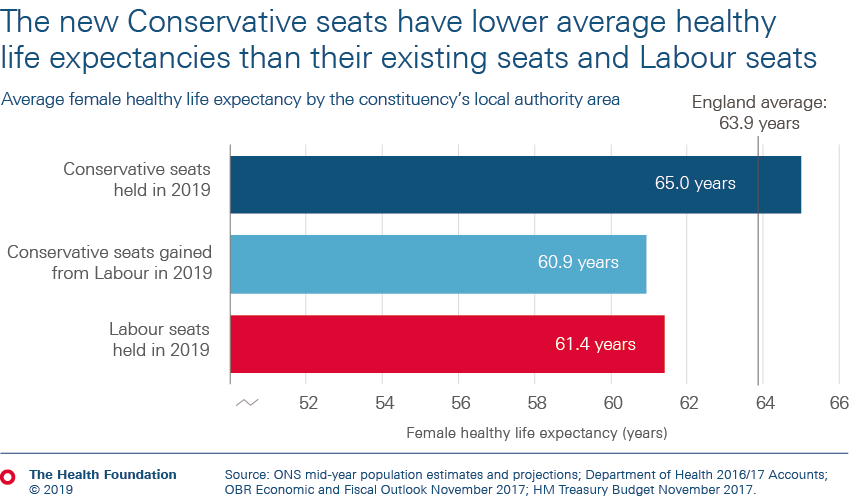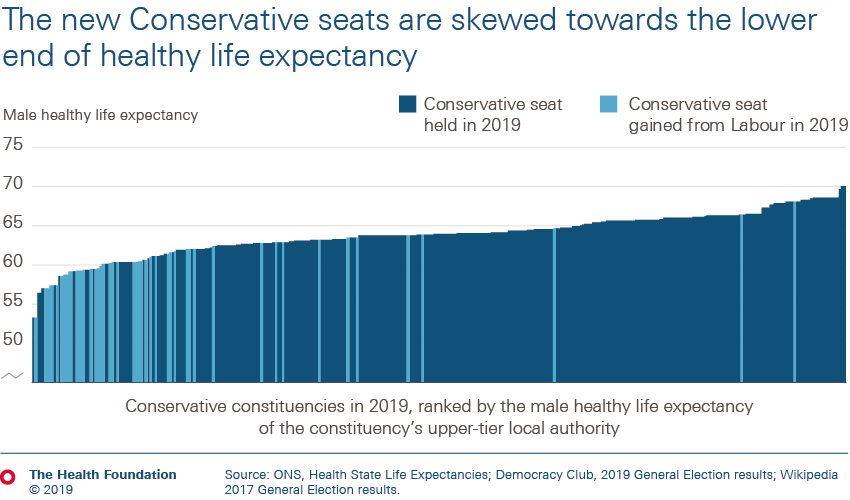New Conservative seats and the healthy life expectancy gap
19 December 2019

In the 2019 General Election, the Conservatives won a majority of 80 seats – winning 48 seats from Labour in England, many of them ‘traditional’ Labour seats. How do these newly won constituencies compare when it comes to the health of the people living there? And what does the government need to now focus on in order to improve health?
There has already been a lot of commentary on the types of seat that changed hand between Labour and the Conservatives in the 2019 general election in terms of age and qualification profiles, having voted Leave in the 2016 referendum by large margins, and being more deprived.
We can add to this mix that the seats the Conservatives won are in areas with a lower life expectancy and even lower healthy life expectancy to the England average and to the seats they held from the 2017 general election.
On average, a woman living in one of the new Conservative constituencies can expect to live 60.9 years of her life in good health, compared to 65.0 years for a woman living in one of the existing Conservative constituencies – a difference of over four years.
The new Conservative seats are skewed towards the lower end of healthy life expectancy. 13 of the 20 Conservative seats with the lowest male healthy life expectancy were won from Labour in the 2019 election. In total, the Conservatives won 41 seats from Labour with below average healthy life expectancy, almost enough alone to give them a majority.
So, what does this mean for the new government?
Evidence shows that the strongest influences on health are the circumstances in which we are born, grow, live, work and age: the wider determinants of health. These are the underlying drivers of health and can either enable individuals and societies to flourish or not.
The Conservative majority has been built on seats in areas with low healthy life expectancies, and lower than the traditional profile of a Conservative seat. This means that this new cohort of MPs, and the government whose majority is largely reliant on these seats, should view this as an incentive to take action on improving healthy life expectancy and narrow these inequalities.
Our recent report, Creating healthy lives, offers a blueprint for how government might approach this task. And in February 2020 the Health Foundation-funded Health Equity in England: The Marmot Review 10 Years On will be launched by the Institute of Health Equity to examine progress in addressing health inequalities in England and propose recommendations for future action.
Further reading
Work with us
We look for talented and passionate individuals as everyone at the Health Foundation has an important role to play.
View current vacanciesThe Q community
Q is an initiative connecting people with improvement expertise across the UK.
Find out more



